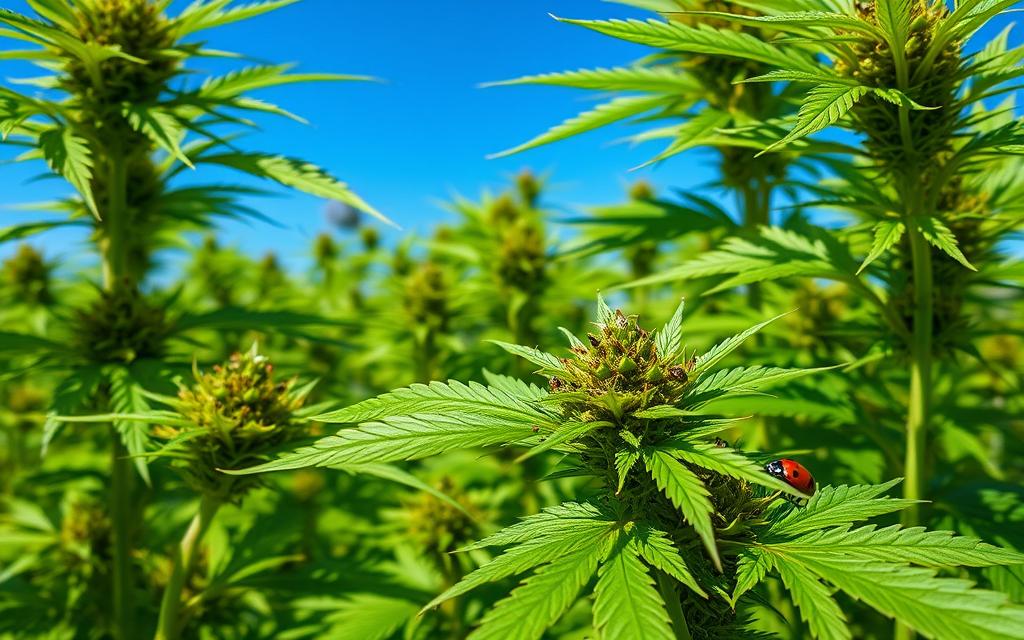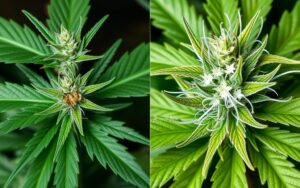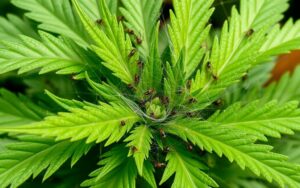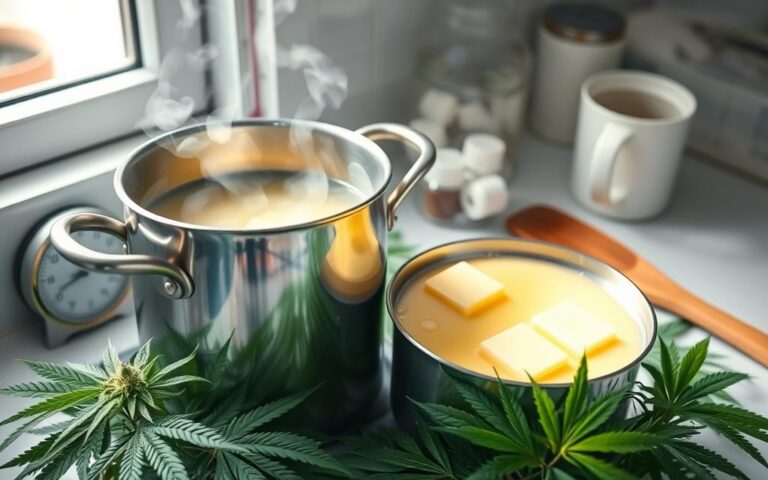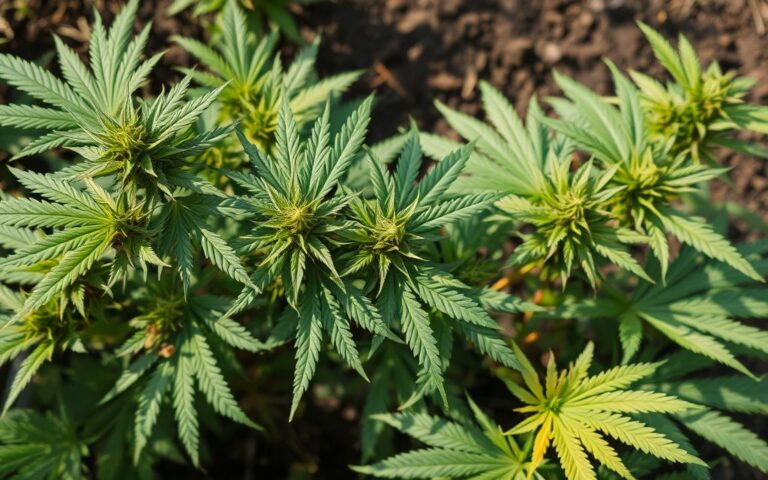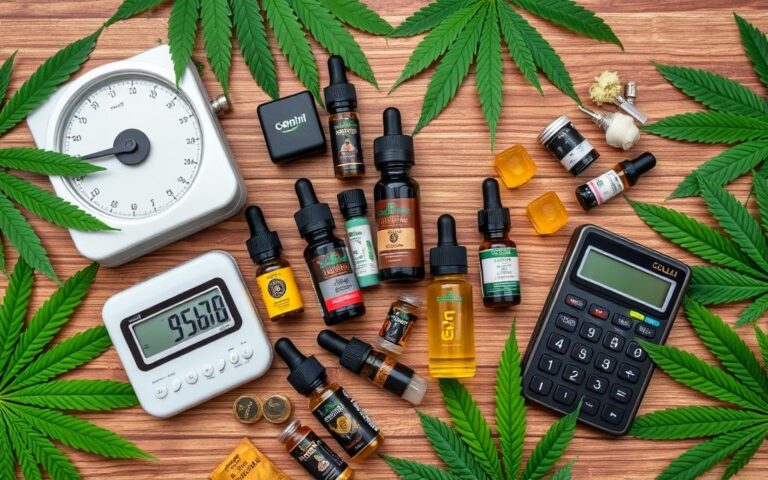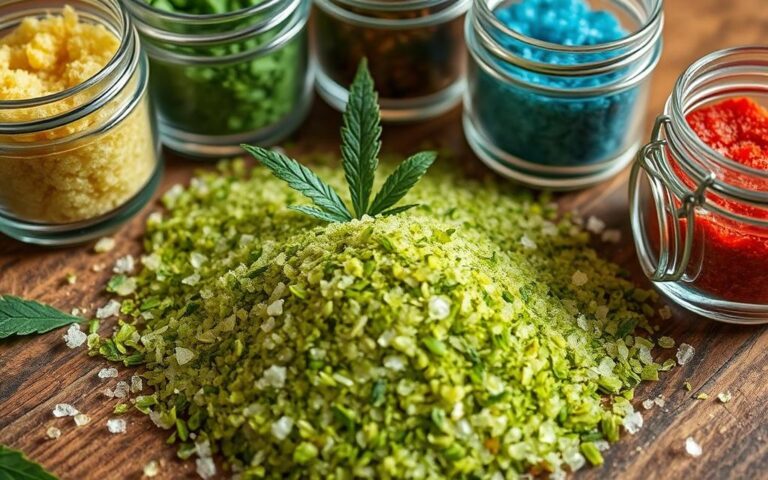Effective Solutions for Removing Aphids from Cannabis Plants
Aphids are tiny pests that suck the sap from your cannabis plants. They can greatly harm the plant’s health and yield. With around 5,000 species, many are known troublemakers in farming and gardening. These pests often stay hidden until they’ve done a lot of damage. So, controlling aphids is key for any grower’s success.
It’s important to spot aphid infestations early. Female white aphids can have about 80 babies each week. Their feeding weakens plants and can cause mold because of the sticky honeydew they leave behind. By managing pests early, you can keep your crops healthy and increase your yield.
This guide will show you how to fight aphids and prevent them. We’ll discuss organic methods that are good for the environment. You’ll learn about natural insecticides, helpful insects, and hands-on removal. For more about dealing with aphids, check out this resource. Let’s make sure your cannabis plants are free from these bothersome pests!
Understanding Aphids and Their Impact on Cannabis
Aphids are tiny insects that love to drink sap from plants and can be a big problem for cannabis. They come in different colours like green, black, red, and white, and are very small, from 1 to 10 millimetres. Recognising aphids early is key to protecting your cannabis plants from them.
What Are Aphids?
Aphids grow their numbers very fast, which can catch you off guard. They can even grow wings to move to new plants easily. Usually, they lay eggs in late summer, so more of them appear in the next season. If not controlled, aphids can spread diseases to cannabis, making leaves curl up and change colour.
How Aphids Affect Cannabis Plants
Aphids do more than just look bad on cannabis. They suck the plant’s sap, which makes the plant weak and slows its growth. This can also cause the plant to produce less. But, there’s hope. Natural enemies, like ladybugs, can help keep aphids away and keep your cannabis healthy.
| Aphid Characteristics | Impact on Cannabis Health |
|---|---|
| Small size (1-10 mm) | Weakens plant structure |
| Rapid reproduction | Can lead to severe infestations |
| Ability to transmit plant diseases | Causes leaves to curl, wilt, and discolour |
| Presence of both winged and wingless forms | Facilitates spread across crops |
| Natural enemies (e.g., ladybugs) | Help regulate aphid populations |
How to Get Rid of Aphids on Cannabis Plants
Dealing with aphids quickly is key to protecting your cannabis plants. These pests can grow fast because females produce five to six babies every day. Using organic solutions for cannabis pests together with specific aphid removal techniques works best for getting rid of these insects.
A potassium soap-based insecticide, mixing 10 ml of washing-up liquid with 1 litre of water, is great against bad infestations. Also, natural pesticides from clove, neem, and peppermint oils are strong against these pests. These natural treatments keep plants healthy without harsh chemicals.
Bringing in friendly insects adds extra defence. Ladybirds, lacewings, and parasitic wasps are good at keeping aphid numbers down naturally. Adding these helpers to your garden cuts down on the need for insecticides.
Keeping your garden’s environment right is also important. The right humidity, temperature, and airflow stop aphids from making your plants their home. A balanced mix of organic solutions and smart gardening keeps your cannabis safe from aphids.
Identifying Aphid Infestations Early
Spotting aphids early is crucial for keeping cannabis healthy. Learning the signs of infestation helps growers act fast. This protects their investment. Checking cannabis plants regularly helps catch issues early on.
Signs and Symptoms of Infestation
Finding aphids early is key to controlling them. Here are common pest symptoms to look out for:
- Clusters of small, green insects under leaves and stems
- Wilting of new leaves
- Leaves that are twisted or curled
- Leaves, especially young ones, turning yellow
- Leaves covered in black sooty mold from honeydew
Spotting these signs means you need to act quickly to save your plants.
Viewing Patterns: Honeydew and Sooty Mold
Aphids make a sticky thing called honeydew. It’s a sign of aphid detection. It also causes sooty mould to grow. This black fungus blocks sunlight, hurting the plant’s food-making process.
Watching for these signs helps keep cannabis plants healthy and productive.
Preventative Measures Against Aphids
Effective pest control can greatly lower the risk of aphid attacks in cannabis growing. By improving conditions and taking early steps, growers make a healthier space for their plants.
Optimising Growing Conditions
Getting the right temperature and moisture is key in aphid management. Cannabis likes temperatures between 20 and 25ºC. Good airflow and careful monitoring keep aphids away. Plants get stronger and resist infestations better with constant care. A clean growing area is crucial too; it reduces places for pests to live. For more tips, check out effective pest prevention strategies.
Encouraging Natural Predators
Natural pest control is great for cannabis growers. Releasing friendly bugs like ladybugs and lacewings helps. They eat aphids naturally, avoiding the need for chemicals. Planting various plants nearby attracts these helpers, improving cannabis health. This way, growers keep their plants safe and support green gardening.
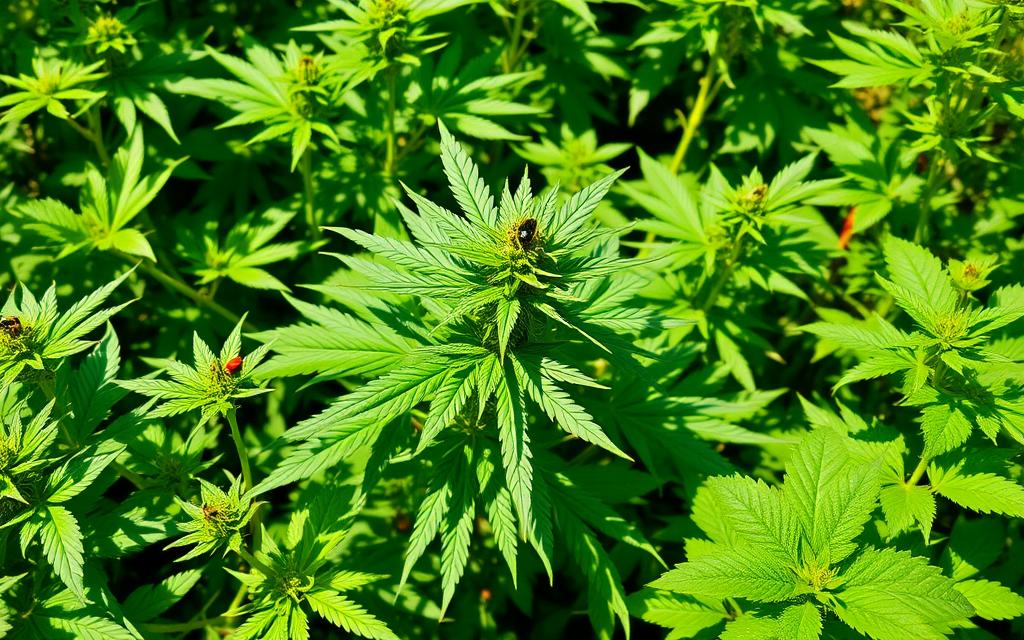
Effective Removal Techniques for Aphids
Aphids are a big problem for cannabis growers. To protect your plants, you need to use different ways to get rid of aphids. These methods can be simple or complex, but their goal is always the same. They aim to cut down the number of pests and keep your plants healthy.
Regular Inspection and Manual Removal
It’s important to check your plants often to find aphids early. Look under the leaves, as aphids like to hide there. You can get rid of many aphids by picking them off by hand or wiping them with a wet cloth. By doing this regularly, your plants will be healthier and produce more.
Utilising Water Sprays and Oils
Using water sprays can help fight against aphids. A strong blast of water can knock them off your plants. If you do this often, it can be very effective. Adding pesticide oils like neem oil can make this method even better. These oils attack aphids and also protect your plants. For tips on making your flowers healthier, check out how to deal with calyx balls on female cannabis here.
Natural Insecticides and Organic Solutions
Seeking healthier cannabis plants? Natural insecticides are a good choice. These organic solutions are sustainable and work well against pests. They ensure the health of your plants.
The Role of Insecticidal Soaps
Insecticidal soaps break down the outer layer of aphids. This makes the aphids lose water and die. They are eco-friendly and leave no bad residues on cannabis plants. To keep pests away, use them regularly. You can make these soaps with just soap and water. This makes a powerful, natural pest fighter.
Using Neem Oil for Aphid Control
Neem oil comes from neem tree seeds and is great at keeping bugs away. The important part, azadirachtin, varies from 0.2% to 0.4% in neem oil. It works on many pests, including aphids. Neem oil doesn’t just repel bugs; it stops them from growing and coming back. Spraying diluted neem oil on plants keeps aphids away and helps the plants stay healthy.
Benefits of Spinosad Products
Spinosad is known for working well against many insects. It’s from bacteria that occur naturally. It attacks pests’ nervous systems. Growers like spinosad because it acts fast and targets only harmful pests. It’s safe for the plants. Using spinosad with other plants that keep pests away makes your cannabis garden even better.
Introducing Beneficial Insects
Using good insects to fight pests can make cannabis plants healthier. These helpers not only keep aphid numbers down but also support eco-friendly pest control methods. By bringing in the right predators, growers make an environment that naturally fights off aphids. This creates a good balance between helpful and harmful creatures.
Common Beneficial Insects that Control Aphids
Some of the top predators include:
- Ladybugs: These beetles eat 60-70 aphids a day and lay eggs amidst aphid groups. Their young can eat up to 300 aphids daily.
- Green Lacewings: Females lay lots of eggs and go after aphids, thrips, and other pests. They turn into cocooned larvae then mature to repeat the cycle.
- Predator Mites: These are good against aphids and spider mites. You might need to release them often to keep pests under control.
- Praying Mantis: They eat many pests, including caterpillars, aphids, and whiteflies, and can live for a year, helping a lot in pest management.
How to Attract and Maintain Beneficial Insects
To get helpful insects to come and stay, try these steps:
- Companion Planting: Grow plants like mint, thyme, and nasturtiums to draw in ladybugs and lacewings.
- Creating Optimal Conditions: A varied garden and extra UVA/UVB light can make a good home for these bug allies.
- Routine Releases: Indoor gardeners might introduce good insects early, while those outdoors do regular releases during the grow season.
By working with beneficial insects, growers can manage pests safely. This approach is in line with sustainable pest control ideals.
Conclusion
Aphid management needs proactive steps for healthy cannabis growing. Aphids breed fast, especially in mild weather. It’s vital to spot them early and keep checking your plants. Setting up strict rules to keep them out and using good pest control can protect your crops. This way, you avoid big losses.
Using natural treatments like neem oil helps. You can also use helpful bugs to keep things balanced. This method cuts down on chemical bug killers, which are often limited by rules anyway. It makes growing cannabis more natural and sustainable. Always check your plants well, especially when adding new ones, to stop pests early.
To grow cannabis well, you need a plan for handling aphids. This means preventing issues, using nature-friendly solutions, and keeping your plants healthy. By doing all this, your cannabis will grow strong without aphid troubles. Plus, you’re sticking to eco-friendly and organic gardening practices.

